
Mauro Rodrigues/Hemera/Getty Images
Mackerel is a common name applied to several species of fish. Many Americans might be familiar with the largest species of mackerel, called the king mackerel. Mackerel are prized for their oily meat, which is very high in omega-3 fats. Omega-3 fats are a type of polyunsaturated fat that offers a variety of health benefits.
Identification
There are many species of mackerel fish. The jack mackerel is a common type of fish found in the Pacific coastal waters. It is also called the blue jack mackerel, Californian jack mackerel, Pacific jack mackerel or saurel fish. Because it is a fattier fish, the Pacific jack mackerel offers nearly as much omega-3 fats per serving as salmon but is less expensive.
Omega-3 Content
A 3-oz. cooked portion of Pacific jack mackerel provides 171 calories, 9 g of fat and 2 g of saturated fat. This modest serving size provides 1,759 mg of omega-3 fats. It is nearly as rich in omega-3 fats as Chinook salmon, which provides 1,822 mg per 3-oz. serving. Canned jack mackerel is the highest in omega-3 fats of all mackerel fish. One ounce of canned jack mackerel, drained, solids only, provides 385 mg of omega-3 fats.
Heart Health
Eicosapentaenoic acid, or EPA, is the type of omega-3 fatty acid found in marine foods, such as fatty fish. Omega-3 fats benefit the heart of both healthy as well as those at high risk of—or who have—heart disease, according to the American Heart Association. It is true that all fish contain some omega-3 fatty acids, but varieties such as jack mackerel are particularly rich sources. Per the American Heart Association, you should consume at least two 3.5-oz servings of fish, especially fatty fish, weekly.
Flavor and Use
Pacific jack mackerel has a flavor similar to canned sardines, and it is canned in the same manner as salmon and tuna. Pacific jack mackerel can be used in place of salmon or tuna in recipes. Tuna, particularly albacore tuna, is very high in methyl mercury. Jack mackerel is lower in mercury because it is a smaller fish and lower on the food chain, thus, it is safer to consume, especially for pregnant women and women of childbearing age.
Recipe
According to the Heritage Recipes website, canned jack mackerel works well for making "mackerel cakes," which are like crab cakes. According to the author who obtained this recipe from her mother-in-law, canned mackerel was used in place of canned salmon as it was much less expensive. The recipe calls for a 15-oz. can of jack mackerel, one egg, 1/2 tsp. salt, stone ground cornmeal and 3/4-cup to 1 cup of oil for frying. The recipe makes seven individual-sized cakes and can be served with ketchup or barbecue sauce. One cake provides roughly 700 mg of omega-3 fats.
Related Articles
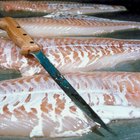
How to Grill a Cod Fish

How to Cook Frozen, Boneless & Skinless ...
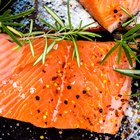
Baked Salmon Filet Nutrition Information

How to Cook Pickerel in the Oven
How to Cook Cobia
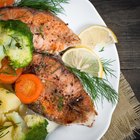
How to Cook a Salmon Steak in the Oven
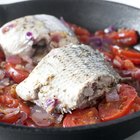
How to Cook Hog Fish

How to Cook a Cajun Seasoned Catfish ...

How to Cook Salmon in Pineapple Juice
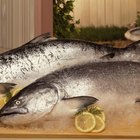
Can You Cook Frozen Salmon Whole?

How to Make Fish Taco Sauce

Is it Healthier to Cook Salmon With Its ...

How to Bake Mullet

Foods Containing DMAE
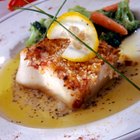
How to Pan Sear Sea Bass

Substitutes for a Tuna Steak

How to Cook Tarakihi
How to Cook Chilean Sea Bass Cheeks

Can I Use Vanilla Buttercream Frosting ...

How to Cook Sardines in the Oven
References
- Food and Agriculture Organization of the United Nations: Fisheries and Aquaculture Department: Species Fact Sheet: Trachurus murphyi
- Nutrition Data: Fish, mackerel, Pacific and jack, mixed species, cooked, dry heat
- Nutrition Data: Fish, mackerel, jack, canned, drained solids
- American Heart Association: Fish and Omega-3 Fatty Acids
Resources
Writer Bio
Michele Turcotte is a registered, licensed dietitian, and a certified personal trainer with the National Academy of Sports Medicine. She has more than 12 years of experience in clinical and corporate settings, and has extensive experience in one-on-one diet counseling and meal planning. She has written freelance food and nutrition articles for Trouve Publishing Inc. since 2004.
Photo Credits
Mauro Rodrigues/Hemera/Getty Images